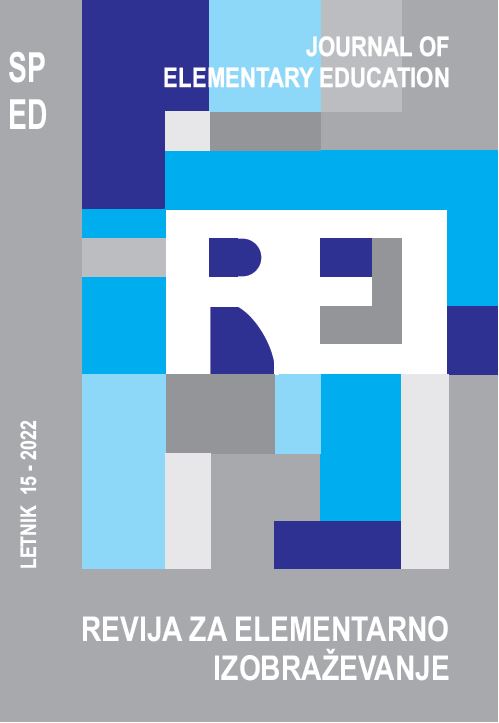Museum as a Place of Informal Learning
DOI:
https://doi.org/10.18690/rei.15.Spec.Iss.27-40.2022Keywords:
museum, formal, non-formal, and informal learning, engagement indicators, studentsAbstract
Museum pedagogy is a museological and pedagogical discipline that deals with communication between artifacts and the public, and the interpretation of cultural heritage content to satisfy cognitive and experiential interests while accepting cultural and civilizational achievements. This paper discusses theoretical knowledge about the nature of learning in the context of the modern division into formal, non-formal, and informal learning. The research includes the museum as a place of non-formal and informal learning and analyses indicators of visitor engagement. The research was conducted among students of the Faculty of Humanities and Social Sciences in Split.
Downloads
References
Bell, P., Lewenstein, B., Shouse, A. W., and Feder, M. A. (Eds.). (2009). Learning Science in Informal Environments: People, places, and pursuits. Washington, DC: National Academies Press.
Birney, B. A. (1995). Children, Animals, and Leisure Settings. Society and Animals, 3(2), 171–187.
Borun, M., Komore, M. and Cleghorn, A. (1996). Families are learning in science museums. Curator: The Museum Journal, 39(2).
Brajčić, M., Kovačević, S., and Kuščević, D. (2013). Learning at the Museum, Croatian Journal of Education, 15, Sp. Ed. 2.
Cash, D. W. (2001). “In order to aid in diffusing useful and practical information”: Agricultural Extension and boundary organizations. Science, Technology, & Human Values, 26(4), 431–453. Doi: 10.1177/016224390102600403
Davis, B., and Bedore, Lisa M. (2013). An Emergence Approach to Speech Acquisition. Hoboken: Taylor and Francis. Retrieved from http://public.eblib.com/EBLPublic/Pu–blicView.do?ptiID=132-3303 (Accessed: 12. 01. 2022)
Dierking, L. D., Falk, J. H., Rennie, L., Anderson, D., and Ellenbogen, K. (2003). Policy statement of the “informal science education” ad hoc committee. Journal of Research in Science Teaching, 40(2), 108–111. Doi:10.1002/tea.10066
Dillon, J., Brody, M., and Stevenson, R. (2013). International Handbook of Research on Environmental Education. Routledge.
Etling, A. (1993). What is nonformal education? Journal of Agricultural Education, 34(4), 72–76. Doi:10.5032/jae.1993.04072
Falk, J. H. (Ed.). (2001a). Free-choice Science Education: How we learn science outside of school. New York: Teachers College Press.
Falk, J. H. (2001b). Free-choice science learning: Framing the discussion. In Free-Choice Science Education: How We Learn Science Outside of School (pp. 3–20). New York: Teachers College Press.
Fallik, O., Rosenfeld, S., and Eylon, B.-S. (2013). School and out-of-school science: a model for bridging the gap. Studies in Science Education, 49(1), 69–91. Doi:10.10–80/030572–67.2013.822166
Falk, J. H., and Dierking, L. (1992). The Museum Experience. Washington, D.C.: Whalesback Books.
Falk, J. H., and Dierking, L. D. (1998). Free-choice learning: An alternative term to informal learning? Informal Learning Environments Research Newsletter, 2, 2.
Falk, J. H., and Dierking, L. D. (2000). Learning From Museums: Visitor Experiences and the Making of Meaning, Lanham, MD: AltaMira Press.
Goleman, D. (1997). Emotional Intelligence. New York: Bantam Books.
Griffin, J. (1998). Finding Evidence of Learning in Museum Settings, Change in Education Research Group, University of Technology, Sydney.
Hein, G. E. (1998). Learning in the Museum, New York: Routledge.
Hooper-Greenhill, E. (1989). The Museum in the Disciplinary Society. Museum Studies in Material Culture, Ed. S. Pearce. Leicester University Press: Leicester.
Luke, J. J., Camp, B. D., Dierking, L. D., and Pearce, U. J. (2001). The first free-choice science learning conference: From issues to future directions. In J. H. Falk (Ed.), Free-choice Science Education: How we learn science outside of school (pp. 151–162). New York, NY: Teachers College Press.
Milutinović, J. (2010). Učenje u muzeju. Povijest u nastavi, VIII (16 (2)), 217–229. Retrieved from https://hrcak.srce.hr/82545. (Accessed: 20. 1. 2022)
Phipps, M. (2010). Research trends and findings from a decade (1997–2007) of research on informal science education and free-choice science learning. Visitor Studies, 13(1), 3–22. Doi:10.1080/10645571003618717.
Perry, D. (1993). Designing exhibits that motivate. What Research Says about Learning in Science Museums, ASTC Newsletter.
Thoron, A. C., and Myers, B. E. (2008). Agriscience: Sustaining the future of our profession. The Agricultural Education Magazine, 80(4), 9–11. Retrieved from: http://www.n–aae.org/prof–development/magazine/ (Accessed: 19. 1. 2022).
Tuđman, M. (1983.) Struktura kulturne informacije. Zavod za kulturu Hrvatske, Zagreb.
Rosić, V. (2005). Pedagoško značenje muzeja. Zavičajno blago u funkciji razvoja Zabiokovlja, Zbornik radova.
Smith, K. M. (1988). Developing Youth Work. Informal Education, Mutual Aid and Popular Practice. Milton Keynes: Open University Press.
Stofer, Kathryn, A. Informal, Nonformal, or Free-Choice Education and Learning? Toward a Common Terminology for Agriscience and Ag-STEM Educators. Retrieved from: academ–ia.edu/17164206/Informal_Nonformal_or_Free_Choice_Education_and_Learning_Toward_a_Common_Terminology_for_Agriscience_and_Ag_STEM_Educators?auto=download (Accessed: 7. 6. 2021)
Downloads
Published
Issue
Section
License
Copyright (c) 2022 Marija Brajčić, Dubravka Kuščević

This work is licensed under a Creative Commons Attribution 4.0 International License.
